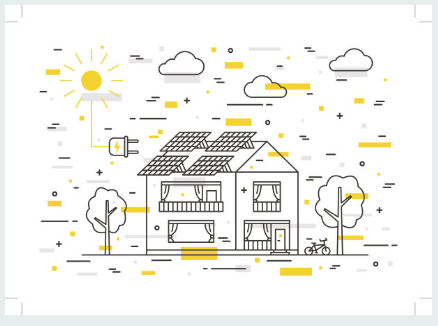Solar energy is the radiant light and heat from the sun that is harnessed by using a range of ever-evolving technologies. Those technologies include solar heating, photovoltaics, solar-thermal power plants, solar architecture and artificial photosynthesis. For example, solar-thermal power plants concentrate the sun's energy as a heat source. The heat is then used to boil water to drive a steam turbine that supplies electricity for thousands of people. However, currently we are able to harness only 0.001 percent of solar energy, which produced less than 0.1 percent of global energy demand.

As an important source of renewable energy, solar energy has many advantages. Firstly, it is a truly renewable energy source. It is available every day and can be harnessed in all areas of the world. We can access to it as long as we have the sun. Secondly, solar energy can be used for diverse purposes. It can be used to generate electricity or heat. Solar power system can produce electricity in areas without access to the energy grid, to distill water in regions with limited clean water supplies, moreover, to power satellites in the outer space. There are also some disadvantages of solar energy systems. First, solar panels are dependent on sunlight to effectively gather solar energy. Although solar energy can still be collected during cloudy and rainy days, the efficiency of the solar system drops. Second, even with low maintenance cost and reduced electricity bill, the initial cost of purchasing a solar system is fairly high.
To increase the harness efficiency and expand the utilization of solar power all over the world, technologies in the solar power industry have been developed dramatically. The technologies are broadly characterized as either passive solar or active solar depending on how they capture and distribute solar energy or convert it into solar power. Passive solar energies include selecting materials with favorable thermal mass or light-dispersing properties, designing spaces that naturally circulate air, and placing big windows on the sunny side of a building that allows sunlight to heat-absorbent materials on the floor and walls. Active solar techniques include the use of photovoltaic systems, concentrated solar power and solar water heating to harness the energy. At Lifeasible, we are constantly advancing and improving the technologies involved in solar power systems. Our innovations in quantum physics and nanotechnology can potentially increase the effectiveness of solar panels, photovoltaic devices and double, or even triple, the electrical input of the solar power systems.